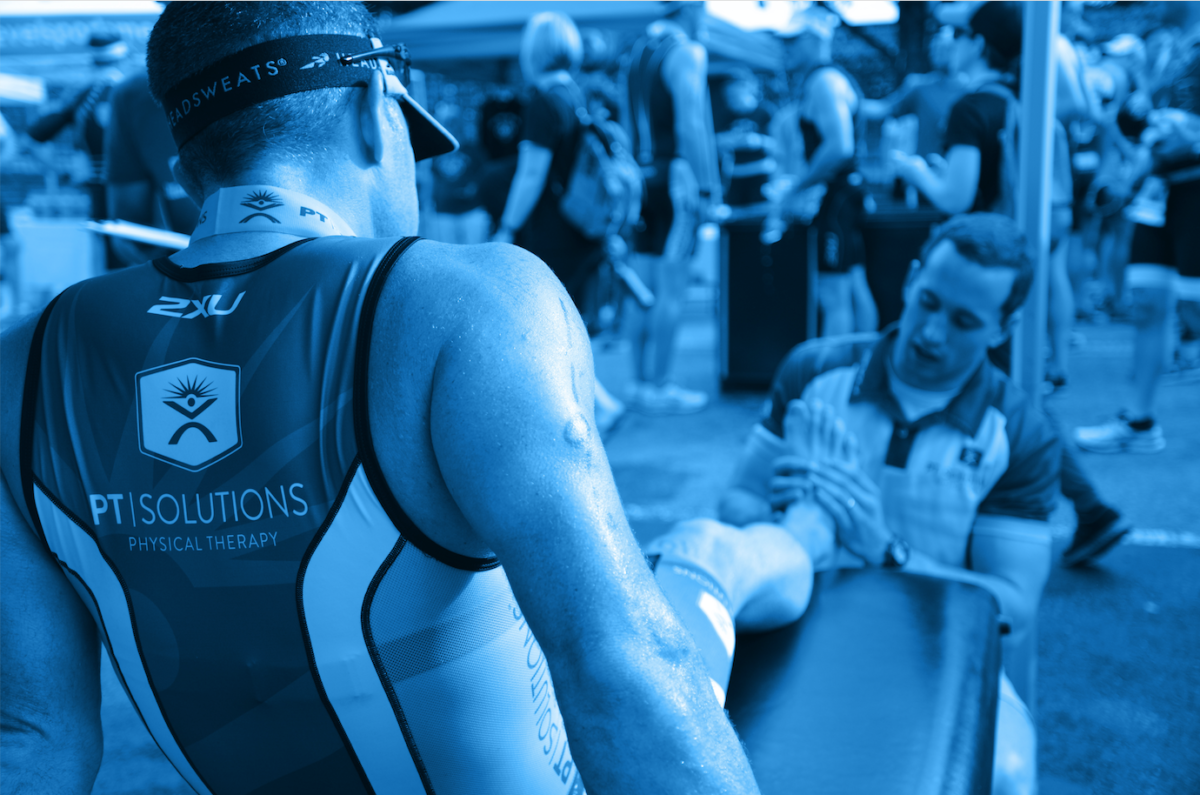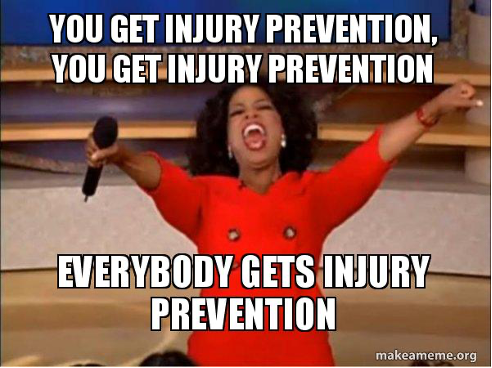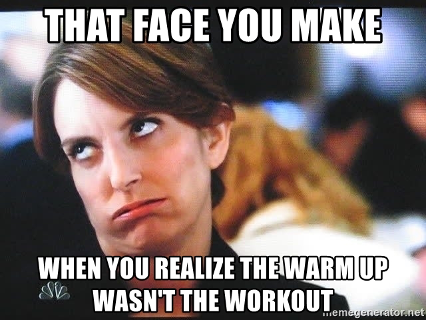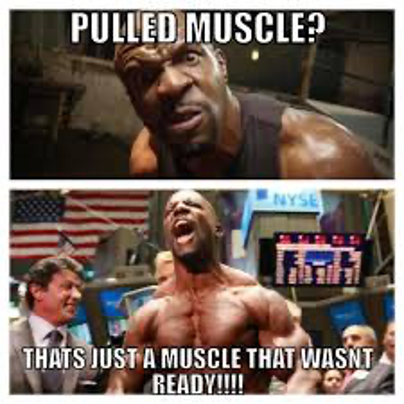Can we prevent injuries?

“Don’t lift with your back rounded or you will hurt yourself!”
I cannot begin to estimate the number of times I told a patient to avoid rounding their low back or flexing their lumbar spine the first few years of my clinical practice. I am not alone in this quest to prevent all future lifting injuries. Gyms and CrossFit boxes are full of trainers cautioning their clients to avoid the dreaded “butt wink” at the bottom of a squat or losing a neutral lumbar spine during the initial pull of a deadlift. Warehouse workers notice ergonomic posters plastered on the breakroom walls following an annual seminar on proper lifting mechanics. Many healthcare workers seek to take advantage of the inevitable failings to abide by this simple rule.
When I opened one of our Atlanta clinics, I would bring a treatment table to the LA Fitness I shared a parking lot with. I would set up at the front and greet people as they came and went. If someone had questions about chronic pain or an injury, I would happily answer them. If a more extensive assessment and treatment were needed, I was all too happy to point to my clinic a couple of hundred feet away. Poor lifting mechanics are low hanging fruit and an easy sell for someone with low back pain; it was a favored strategy. But does the literature support the cause and effect relationship? If you ask the authors of a recent systematic review and meta-analysis pursuing this very question, they would say it does not.

Sarenci et al. published a paper in the Journal of Sports and Orthopedic Physical Therapy titled “To Flex or Not to Flex? Is There a Relationship Between Lumbar Spine Flexion During Lifting and Low Back Pain? A Systematic Review with Meta-analysis.” The initial literature review produced over 4500 articles. After whittling the number down to 13 full texts for final review, they sought to determine if flexing the lumbar spine while lifting is a risk factor for low back pain development or maintenance. They also wanted to determine if people with current low back pain displayed differing levels of flexion during lifting tasks compared to people without pain. What they found flies in the face of conventional wisdom. Here are the findings and implications in the authors’ words:
“There was no prospective association between lumbar spine flexion when lifting and the development of significantly disabling low back pain. There was no difference in peak lumbar flexion during lifting between people with and without LBP. Current advice to avoid lumbar flexion during lifting to reduce low back pain risk is not evidence based.”
While this is a single study, it is a systematic review with meta-analysis; however, even systematic reviews and meta-analyses can contain errors and biases, and this one is no different. The studies were predominantly observational, limiting our ability to draw causative conclusions. Correlations and associations are not indicative of causation or even a direct relationship. Like smoking, however, as we compile similar findings across multiple patient populations and with slightly different research questions, we can become more confident in our assessment.
Problems with relying on correlations
Some research questions will never pass a review board and thus cannot be tested with a randomized control trial. Going back to smoking, we cannot randomly allocate a few hundred people to smoking one pack of cigarettes a day and allocate another few hundred to a control group then see who has a higher death rate in 20 years. Additionally, the longer a study progresses, the more potential for external biases and influencers – such as diet and exercise habits – to alter the study. But, when we look at all the data, the picture is fairly clear. While still observational in nature, we have many studies with large subject pools that consistently show increased smoking increases the risk of lung cancer. If you stop smoking, the risk is reversed. If you smoke unfiltered compared to filtered, the risk increases. If you smoke two packs a day compared to one, the risk increases. Any way you look at the problem, smoking increases cancer risk. Do we see the same for lifting injuries?
The Sarenci study is a start but not enough to draw firm conclusions. The literature is certainly leaning toward no but there are caveats. This particular review only assessed lifts up to 12 kg. They referenced previous reviews that indicated “greater exposure to forward trunk inclination in the workplace, lifting frequencies of greater than 25 lifts per day, and regularly lifting over 25 kg were associated with increased risk of LBP.” Herein lies the primary issue. What is the dose-response?
If I have one cigarette a month, will my lung cancer risk increase? If I eat one dessert a week, am I more likely to develop diabetes than if I don’t? If I lift with a rounded back but only exceed 25kg when deadlifting in the gym, will I develop back pain? These questions are not easily answered. Anecdotally, every time a new deadlift world record is set, the lumbar spine is flexed, and the spine survives. This is hardly sound evidence, but it does stress the point that our backs are naturally resilient and can be strengthened significantly. What we are learning is injuries, like pain, are multi-factorial. And thus, injury prevention is unlikely to be successful if approached with a narrow focus.

Common sports injuries
The injury prevention literature does not stop at lifting with a rounded back. There are several commonly researched areas in the world of injury prevention: ACL tears, hamstring strains, UCL tears (cause of Tommy John surgery), and running overuse injuries. You will find studies assessing other ailments and associated preventative strategies, but these make a large proportion of the published studies. This is primarily driven by their prevalence and impact. ACL reconstructions and Tommy John surgeries end a player’s season. Running is the most common recreational sport and the easiest to pick up; all you need is space. Up to a staggering 80% of runners will experience a running-related injury at some point in their life. Injuries are expensive as well. Findings ways to prevent them saves the health system and the individual both time and money.
Looking at the evidence what is the efficacy of designing injury prevention strategies for each of these conditions? While this won’t be a comprehensive review, allow me to break it down some of the trends.
ACL Tears
The results are very mixed here. Some studies show specific ACL prevention programs reduce the risk for future tears, some show ACL risk remains the same but the prevalence of knee pain is reduced, and others show no effect.[1] A primary issue is the differing demands across sports. For example, Michaelidis and Koumantakis published a 2013 systematic review in Physical Therapy in Sport which assessed the outcomes of ACL prevention programs among differing sports.[2] They found a benefit of using prevention programs in soccer and handball but not basketball. Specificity is key.
Sports having varying degrees of demands on the body. A well-rounded injury prevention protocol should focus on multiple components of training: plyometrics, dynamic stabilization, strength training for the trunk, upper and lower body as well as sport-specific agility training paired with education and feedback on correct technique. This challenges the belief of focusing on a single cause.
For ACL tears, the most commonly blamed culprit is the dreaded excessive knee valgus, or inward dive of the knee, during loading. This focus is not unwarranted. For example, studies have shown ACL-injured athletes demonstrate knee valgus when landing on a single leg after jumping off box 2.5 times more often than their uninjured counterparts.[3] This is often perceived as an issue, as knee valgus is the mechanism for ACL tears. ACL strain increases the further we dive into knee adduction and internal rotation. There is a difference between a rapid movement that strains the ACL past the strain capacity and occasionally putting a mild strain on it.
Studies that assess whether knee biomechanics actually increase the risk of ACL tears fall short. Many studies show no increase in risk at all. [4] Just because we see a correlation between knee valgus and patients with ACL tears, does not mean the valgus is causative. Let’s say multiple studies point to the same conclusion and we determine the injury risk increases for a specific factor, while an increased relative injury risk is certainly a concern, it does not tell the whole story.
When dealing with risk, we must understand the difference between relative and absolute risk. One study demonstrated a 2.8-times increase in ACL injury rates for people with generalized joint laxity. This is the relative risk increase. The participants experienced an increase from .09-.28 injuries per 1000 exposures to .18-.56 injuries per 1000 exposure. This is the absolute risk.
The absolute risk tells us the actual amount of risk after all the variables are considered while the relative risk tells us the modifier applied after adding or subtracting new variables. Relative risk is often reported in the abstract and in journalism, such as newspaper articles and blogs, as it creates a greater emotional response and grabs the reader’s attention. Without knowing the absolute risk, relative risk carries little meaning. A ten-fold increased risk grabs headlines, but if the original risk was 1 in 10 million, our concerns should be tempered.
Going back to lifting with a rounded back, when determining “correct” or “optimal” lifting mechanics, you can look through one of two lenses: injury prevention or performance. For performance, a rounded back may be ideal. During the deadlift, a flexed thoracic and lumbar spine will decrease the amount of hip flexion needed to reach the bar, creating a biomechanical advantage and potentially resulting in more weight lifted. Let’s say rounding my back allows me to add 5% load to the bar. This could induce a greater hypertrophy and strength response, or it may be the difference between winning a powerlifting meet. Now, let’s say that rounding my back has a 3-fold relative risk increase for injuring my back. Is it worth it? Maybe not. What if the absolute risk changes from 0.2% to 0.6% chance? Every powerlifter will gladly take the increased risk.
For the drop vertical jump task in ACL-injured athletes, a 2.5-fold increase remains low. While risk should not be completely ignored, how much time and effort should go into the task of improving the drop test. That may limit the risk for injury in some patients, but others may benefit from a different focus in training sessions. Also, a drop vertical jump induces a heavy eccentric load and power demand. Could that play a bigger role in preventing injury compared to the sagittal plane control?
When assessing the body of research as a whole, it appears multi-modal warm-up programs, like the 11+ or FIFA 11 program, are the best bet for prevention for ACL tears. The warm-up focuses on strength, power, endurance, and balance (no stretching). Additionally, appropriate off-season conditioning and load management appear vital as well. You will start to notice a theme in the value of a balanced approach and load management.

UCL Tears
A fantastic review of the baseball injury prevention literature was conducted by Melugin et al in 2018 and was published in Current Reviews in Musculoskeletal Medicine.[4] The authors broke down the injury prevention studies into youth, high school, college, and professional categories. Overuse, arm fatigue, high pitch velocity, participation in showcases, and traveling baseball are all associated with increased risk for injury for youth players. For prevention measures, the opposite strategy is often employed. Throwing less typically takes the forefront. Research and guidelines instruct kids to throw fewer pitches and innings, avoid playing catcher on pitching off-days, take more time off during the year – perhaps by playing a different sport – and to stop worrying about the radar gun. Unfortunately, in the world of sports specialization and $400 million professional baseball contracts, the adherence to these recommendations is often poor.
The injury prevention recommendations that are adhered to are often passed down by coaches who frequently lack the evidence to support them. The most common of these is the danger of the curveball. It has long been conventional wisdom that the curveball places excessive stresses on the elbow ligaments, specifically the UCL, because of the nature of the throw. Yet, biomechanical studies clearly demonstrate the fastball produces the most torque and strain on the UCL. The focus on speed and a high volume of fastballs is more likely the culprit rather than an early expansion of a pitching repertoire. Unfortunately, many youth pitchers, coaches, and parents believe volume does not lead to harm and, conversely, believe volume is necessary for success at the current and next level of competition.

When entering high school, the emphasis is more on developing the physical traits necessary to excel and prevent injury. Here, the weight room becomes a staple in training as opposed to exclusively throwing the ball. While there is a correlation between tightness in the upper and lower extremities and shoulder and elbow pain, stretching is not necessarily the answer. The evidence on stretching the arm and should for injury prevention is mixed, and the effects are likely short-term.
In the college and professional level, periodization and workload management are the main areas of focus. Injuries are more common during the pre-season and initial weeks of the season, indicating a potential lack of off-season preparation and inappropriate activity ramp. While the elbow is more skeletally mature, the UCL is still vulnerable and the pitch velocity continues to climb as the competition intensifies. Even within the professional level, pitch velocity has increased from an average fastball of 90.9 mph in 2008 to 93.3 in 2017, potentially explaining the continued high prevalence of injury rates despite innings limits being more common.
At the professional level, we start to see the guessing game of innings limits and pitch counts. The 100-pitch count threshold and 200-innings limits are more expert opinion than grounded in evidence. We also don’t know the appropriate ramp for pitchers. Minor league pitchers and rookies are often limited to roughly a 20-30% ramp in innings year over year. Unfortunately, we cannot design randomized control trials to answer this question. No pitcher or team will agree to specific innings limits, potentially pushing the limit in an effort to create an injury (this would be frowned upon by any ethics review board), in an effort to determine the appropriate inning limit recommendation. We must instead rely on epidemiologic data and best guess.

One area not discussed is pitching mechanics. While some mechanical “flaws” such as the ‘inverted W’ (see above) and hyperabduction of the shoulder during late cocking are believed to contribute to UCL tears, there are plenty of anecdotal examples of players who are pain and injury-free with commonly accepted “poor” mechanics. I won’t rely on anecdotal evidence. I mention it as anecdotal evidence is often used to perpetuate the dangers of the inverted W. While it may lead to more stress, like a flexed posture, we must determine with more stress is dangerous. At what point is the statistical difference clinically relevant. Furthermore, is the inverted W the most important area to focus on? Like ACLs, this is a multi-modal issue. Instead of simply worrying about curveballs and arm slot, addressing total throwing volume, mechanics, off-season conditioning, lower extremity strength and power, and building arm endurance in a comprehensive plan will likely yield the best outcomes. Recall the schema theory from a previous post as well. Youth athletes benefit from a multi-sport approach, not only to reduce the repetitive stresses of a single activity, but for motor control development as well.
Hamstring strains
The treatment approach garnering the most attention regarding hamstring tears is eccentric strengthening. Eccentric training has demonstrated favorable results for strengthening muscles and treating tendinopathies. Al Attar et al. published a systematic review and meta-analysis in Sports Medicine in 2017 on this very topic. They sought to determine the effectiveness of injury prevention programs that included the Nordic Hamstring exercise on reducing hamstring injury rates while factoring in athlete workload.[6] The results were promising.
The pooled data demonstrated a 51% reduction of relative risk for hamstring injuries when teams utilized the Nordic Hamstring exercise in their training programs. The results are less impressive when adding absolute risk. The difference between the Nordic Hamstring users and controls was 0.359 to 0.690 hamstring injuries per 1000 hours of exposure. The hours of exposure are used instead of total injuries because of variability in playing time. Athletes who spend more time in match and training conditions are at greater risk for injury due to factors such as fatigue, collisions, falls, and overall workload.
Bear in mind, for the tested exercise program to be effective, an athlete must achieve the necessary dose-response. Occasional eccentric training does not yield a protective effect.[7] Compliance, like with any exercise program, remains crucial. Another interesting note, all five of the studies used to pool the data used the Nordic Hamstring exercise as a warm-up exercise prior to training sessions. Like the 11+, the warm-up and preparation for athletic activity – not through stretching – appears to be an important strategy.

Also, like the 11+ and ACL tear prevention, hamstring injury prevention measures use programs and not individual strategies. This is a theme throughout the injury prevention literature when designing effective strategies. Common individual factors are often cited, such as the quadriceps to hamstring strength ratio for hamstring strains, fail to produce consistent results across studies. Looking closer at the quad to hamstring ratio as an example, the studies that do support a poor ratio as a causative factor often draw conclusions on relative risk in a single population. Again, we must consider absolute risk as well.
Croisier et al. published “Strength Imbalances and Prevention of Hamstring Injury in Professional Soccer Players: A Prospective Study” in The American Journal of Sports Medicine in 2008.[8] The researchers performed isokinetic hamstring and quadriceps strength testing on 687 professional soccer players, of which only 462 completed follow-ups; a separate but concerning issue regarding the accuracy of the final results regarding risk. It is more likely someone not suffering a complication or injury would not seek follow-up. At the end of the season, 4.1% of the 246 players without muscle imbalances suffered a hamstring strain while 16.5% of the 91 players with imbalances and who were not treated suffered one. We get more information on the risk when closely examining the treatment options.
The study divided groups into no ratio imbalance, imbalance without compensation training, an imbalance with compensation training but no follow up measures on effectiveness, and imbalances with compensation training until imbalance was eliminated. The relative risk increase was still 2.89 when comparing group 1 and group 3. With the groups broken down, the sample size reduction increases variability in results. Furthermore, the interventions of hamstring strengthening may have simply improved overall strength, power, and endurance. This does not guarantee the ratio was the concern. Perhaps all players would benefit from hamstring specific strengthening for the prevention of hamstring strains. It may have nothing to do with the relative quadriceps strength and the ratio but simply the fact the hamstrings needed further strengthening.
Like with UCL and ACL tears, hamstring injury reduction appears to favor a multi-modal approach. While UCL, ACL, and hamstring tears are all acute events – UCL is likely a gradual fraying before being torn – they are predisposed to injury over time. We must be wary of our confirmation biases and the satisfaction of search – giving increased weight to the first plausible finding in our exams (e.g. MRI findings or knee valgus) – limiting our assessment to single causative factors. I will explore this concept of a multi-modal approach in a future post. In the next article, I will dive into a topic that required it’s own individual post: running-related injuries.
References
- Grimm, N.L., et al., Anterior Cruciate Ligament and Knee Injury Prevention Programs for Soccer Players: A Systematic Review and Meta-analysis. Am J Sports Med, 2015. 43(8): p. 2049-56.
- Michaelidis, M. and G.A. Koumantakis, Effects of knee injury primary prevention programs on anterior cruciate ligament injury rates in female athletes in different sports: a systematic review. Phys Ther Sport, 2014. 15(3): p. 200-10.
- Dallinga, J.M., A. Benjaminse, and K.A. Lemmink, Which screening tools can predict injury to the lower extremities in team sports?: a systematic review. Sports Med, 2012. 42(9): p. 791-815.
- Cronstrom, A., Creaby, M. W., & Ageberg, E. (2020). Do knee abduction kinematics and kinetics predict future anterior cruciate ligament injury risk? A systematic review and meta-analysis of prospective studies. BMC Musculoskelet Disord, 21(1), 563. doi:10.1186/s12891-020-03552-3.
- Melugin, H.P., et al., Injury Prevention in Baseball: from Youth to the Pros. Curr Rev Musculoskelet Med, 2018. 11(1): p. 26-34.
- Al Attar, W.S.A., et al., Effect of Injury Prevention Programs that Include the Nordic Hamstring Exercise on Hamstring Injury Rates in Soccer Players: A Systematic Review and Meta-Analysis. Sports Med, 2017. 47(5): p. 907-916.
- Goode, A.P., et al., Eccentric training for prevention of hamstring injuries may depend on intervention compliance: a systematic review and meta-analysis. Br J Sports Med, 2015. 49(6): p. 349-56.
- Croisier, J.L., et al., Strength imbalances and prevention of hamstring injury in professional soccer players: a prospective study. Am J Sports Med, 2008. 36(8): p. 1469-75.
ABOUT THE AUTHOR
 Zach Walston (PT, DPT, OCS) grew up in Northern Virginia and earned his Bachelor of Science in Human Nutrition, Foods, and Exercise at Virginia Polytechnic Institute and State University. He then received his Doctorate of Physical Therapy from Emory University before graduating from the PT Solutions’ Orthopaedic Residency Program in 2015.
Zach Walston (PT, DPT, OCS) grew up in Northern Virginia and earned his Bachelor of Science in Human Nutrition, Foods, and Exercise at Virginia Polytechnic Institute and State University. He then received his Doctorate of Physical Therapy from Emory University before graduating from the PT Solutions’ Orthopaedic Residency Program in 2015.
Zach has numerous research publications in peer-reviewed rehabilitation and medical journals. He has developed and taught weekend continuing education courses in the areas of plan of care development, exercise prescription, pain science, and nutrition. He has presented full education sessions at APTA NEXT conference and ACRM, PTAG, and FOTO annual conferences multiple platforms sessions and posters at CSM.
Zach is an active member of the Orthopedic and Research sections of the American Physical Therapy Association and the Physical Therapy Association of Georgia. He currently serves on the APTA Science and Practice Affairs Committee and the PTAG Barney Poole Leadership Academy.